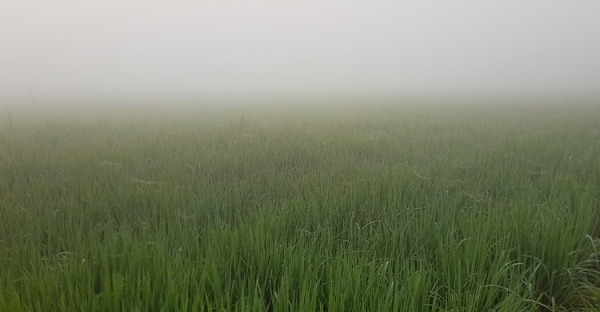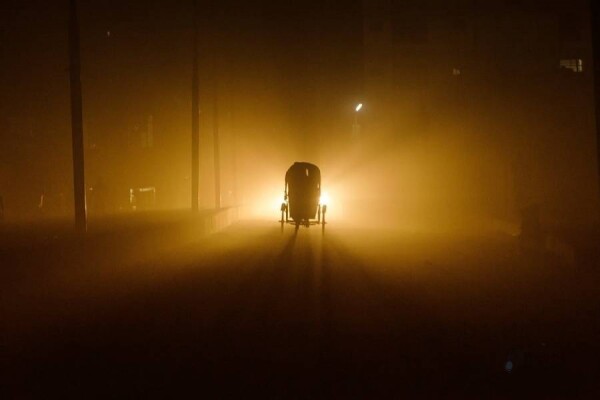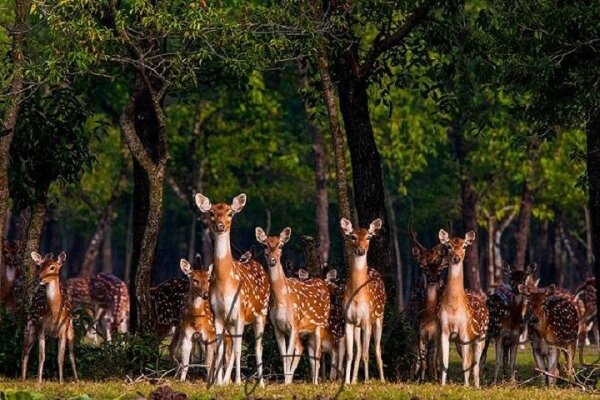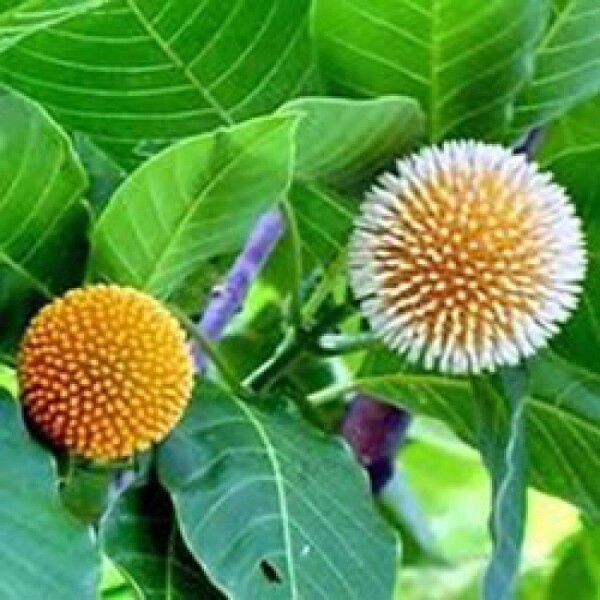 The unspoken few words that were never revealed.
The unspoken few words that were never revealed.
|
Posted:Nov 2, 2023 10:00 am
Last Updated:Mar 9, 2024 5:58 am 39225 Views
|
The song that I still love to listen to alone whenever such an opportunity presents itself.
The song posted below tells us about a time when one can reveal lifetime innermost thoughts and emotions to someone dear, meeting face to face in seclusion and solitude so that none other can hear the words.
The original song was written in Bengali by the first Asian Nobel laureate poet Rabindra Nath Tagore. Those who want to listen to the original Bengali version of the song may Google " Emono Dine Tare Bola Jay."
On such a day, can I tell someone
In such a dark and dense downpour.
On such a day, can I bare my soul
Amidst the rumbling roar of clouds,
This unceasing drizzle of rain,
This sun bereft deep duskiness
None other there be to hear those words
In seclusion and solitude
Face to face, the two of us
Heavy of heart in deep sorrow
Incessant tears streaking the skies
None other there be as if it were.
Worldly matters, pretense they are
Deception is the daily din
Gazing into each other eyes
Sipping sweet nectar from therein
One heart reaching out to another
All else fades into the dark
The offence is to anyone,
Unburden my heart, if I can
In this deluge, once if I can,
Sit down in a quiet little nook
Few words I say to the one
Does it matter to anyone?
The wind speeds in desperation,
Lightning flashes from time to time
Those words that have, in this lifetime
Remained within, in my mind
Those are the words that I may tell
Today, in this dark and dense downpour.
Emono Dine Tare Bola Jay. Translated by Rumela Sengupta

|
|
|
13
Comments
|
|
 The Blue Autumn Sky and dancing Kans grass on the Ground
The Blue Autumn Sky and dancing Kans grass on the Ground
|
Posted:Oct 22, 2023 9:54 am
Last Updated:Nov 18, 2023 11:51 pm 44291 Views
|
The autumn season has finally brought about a beautiful change in nature with its exquisite hues. The sky is filled with achromatic cotton-like clouds, while the ground is covered with thin-white Kashful (Kans Grass) that sways gently in the mild breeze across Dhaka.
The photo of the blue autumn sky was taken this morning from the rooftop of my residence and can be viewed below.
Nothing is more soothing than watching the extravagant clouds idly sweeping the blue autumn sky.
Photo (Kans Grass ): Collected

|
|
|
17
Comments
|
|
 The Dance of the Winter Breeze!
The Dance of the Winter Breeze!
|
Posted:Oct 18, 2023 6:41 am
Last Updated:Mar 9, 2024 6:01 am 45956 Views
|
The winter is expected to arrive earlier than usual this year in the northern parts of my homeland. The thick fog in the early morning, the chilly dew in the air, the sparkling dew drops on the grass, and vehicular traffic with headlights on until late morning would become a regular feature in this region of my country. The photos posted depicting the early winter scene below speak for themselves!
It is Autumn here now: Time to watch the leaves changing colours and finally falling on the grounds below. But things are different here this year. The nature has gone a bit wild. At least, I feel so. The sky does not look blue in the city where I live now. The summer haze is yet to be replaced by clear air that leads to a bright blue scene. I wish I could go to the beautiful city of Rajshahi to feel the touch of the breeze of winter now being enjoyed by the people of the northern region of this land.
Photos: Collected.

|
|
|
18
Comments
|
|
 Brave fight for survival
Brave fight for survival
|
Posted:Oct 8, 2023 11:25 am
Last Updated:Nov 26, 2023 3:05 am 41845 Views
|
The monkey sitting on a pillar of the Health Complex fence of a small town of Chittagong division is no longer alive. It came into the limelight across Bangladesh after it came on its own to receive treatment for the severe injuries sustained by it due to an electric shock from the physician of the health complex. (Photo #1).
The monkey was seen looking for food in the locality before it received the massive electric shock. Perhaps it came into contact with a live electric wire while resting on an electric pole.
The health officer of the complex noticed the injured monkey wandering around the health center premises first. He initiated treatment of the wounds of the monkey on the same day. It reappeared again the next day. The medical team of the center applied fresh bandages with medication. The monkey remained calm during the time the medical team treated it. The monkey returned to the health center again the next day. The health center people removed the previous bandage and provided additional dressing.
The monkey was finally transferred to Veterinary and Animal Sciences University, Chittagong, for advanced treatment. Though fought bravely, the monkey could not overcome its injuries.

|
|
|
9
Comments
|
|
 Rahe Na Rahe Hum ( I may or may not be here).
Rahe Na Rahe Hum ( I may or may not be here).
|
Posted:Sep 26, 2023 9:50 am
Last Updated:Nov 18, 2023 7:18 am 41314 Views
|
The song, Rahe Na Rahe Hum, is an odd to love that celebrates the permanence of memory. It is more than mere words. It captures an inspiring philosophy on losing a loved one. The English summary of the song is posted below for those who would like to listen to it on the internet. Just google the words “Rahe Na Rahe Hum”. The song was sung by Late Lata Mangeshkar many years before this day.
Please read and Ponder Upon:
I may or may not be physically present, but my fragrance will linger on, just like a bud, like a gentle breeze in a devoted garden. The garden will always be adorned with beautiful colours, regardless of the changing weather conditions. Whether it's autumn or spring, the sweet scent of love from my hair will always be present to be savoured. And as I bloom, I will sway and dance gracefully.
Being lost in deep love, I no longer feel separation from togetherness. Ever since you entered my heart, I have remained in the realm of love. Just like a bud and a gentle breeze in a devoted garden, whether I am here or not.
When I am gone, you may pause by my grave as you walk by in the rainy moonlight, wet with my tears. You will hear me call you as you walk by, and we shall meet somewhere again. I may or may not be here, but my fragrance will linger on.

|
|
|
13
Comments
|
|
 Life in Sundarbans: The Hunter and The Hunted.
Life in Sundarbans: The Hunter and The Hunted.
|
Posted:Aug 29, 2023 11:44 am
Last Updated:Dec 30, 2023 2:51 am 39592 Views
|
The world's largest mangrove forest, Sundarbans, is the primitive abode of both the hunter and the hunted. Nature has given this forest various flora and fauna, green canopy, and numerous meandering Streams, creeks, and rivers. This forest is located in the largest delta formed by the confluence of the rivers Ganges, Brahmaputra and Meghna in the Bay of Bengal. My ancestral home is located near this beautiful Bangladesh region. I spent a few years of my boyhood in my village home before my parents settled for city life in the year 1944.
Sundarbans have a unique ecosystem and a rich wildlife habitat. Here below, I would like to write a few lines about two kinds of animals living in Sundarbans. One is a predator and the other is its favorite prey.
The appended pictures would identify the hunter and its main prey easily.
The largest and the fiercest member of the big cat family ruling the Sundarbans since time immemorial is the Royal Bengal Tiger. I am sure that readers of this short article have seen Bengal Tigers in the Zoo. But I wonder how many of us know that no two Bengal Tigers look alike! Each of the Bengal Tigers has a unique stripe pattern which makes each of them different from another tiger. The color of the Royal Bengal Tigers generally ranges from yellow to light orange. The stripes range from dark brown to black.
Bengal Tigers are ambush hunters. They mostly prefer to hunt in the night and are born killers. They are carnivores like other members of the big cat family. They survive mainly on mammals and animals like Deer, Antelope, wild Boars, etc. In Sundarbans, Chital Deer (also known as spotted deer) is Bengal Tiger’s favorite prey. They attack their prey in stealth mode. In Sundarbans, Bengal tigers are usually spotted in swamps, mangroves, and grasslands. They are fast Runners and as well as good swimmers too.
The Royal Bengal Tigers like to live a solitary life. Their nature is fierce and as such are not friendly.
Photo # 2: Spotted deer (Chital deer) are found in large numbers in Sundarbans. They live in herds of 100 or more in Bangladesh, Bhutan, India, Nepal, and Sri Lanka. They are the symbol of agility, grace, and gentleness. It browses on grasses, leaves, and fruits. They are the main prey of Bengal Tigers. The spotted deer is protected under the Wildlife (Preservation) (Amendment) Act, 1974 of my country, Bangladesh.

|
|
|
11
Comments
|
|
 Journey Towards the Evening Star
Journey Towards the Evening Star
|
Posted:Aug 24, 2023 11:17 pm
Last Updated:Nov 15, 2023 9:13 pm 34160 Views
|
Here is the English translation of a Bengali song that reminds us of our past. I have neither translated the lyrics into English nor I know the name of the Bengali lyricist. Looking back to my past, I realize how quickly time flew by while I was busy with my daily activities- constructive, unconstructive, or playful. I value every second of each day now. Maybe it is too late for me; I can feel that the Evening Star is not far from me!
My heart lost in thought of despair
It doesn’t matter for anyone anywhere
In my solitary sky, all memories drift with clouds
In my pains of many shades and hues
In all those fantasies that I still muse
The unseen moments that flash now and then!
Fades away the day.
To Evening Star’s way.
Yet, she is not coming into my garden.
The Evening Nightingale.
In the sweet melody dale
Secretly hums about my lost beloved.
Fades away the day.
To Evening Star’s way.

|
|
|
15
Comments
|
|
 Nature's Reward- Colored Cauliflower
Nature's Reward- Colored Cauliflower
|
Posted:Aug 18, 2023 8:02 am
Last Updated:Nov 25, 2023 1:16 am 32539 Views
|
Have any of my readers seen and eaten cauliflowers that are red, yellow, pink, or purple instead of the regular white ones?
I have never eaten any coloured cauliflowers other than the regular white ones though I have seen yellow and purple-coloured ones in shops for sale.
I have recently read an article published in a local daily newspaper that farmers in different parts of a nearby Dhaka district are trying their luck in growing this coloured cruciferous vegetable- not just for their beauty but also for their increased nutritional value.
Farmers say that Consumers are now buying this eye-catching variety of Cauliflower directly from their fields as they are not readily available in local markets even though the price is much higher than the regular white ones.
Appended photos are all collected.

|
|
|
17
Comments
|
|
 What does the Mural tell us?
What does the Mural tell us?
|
Posted:Aug 8, 2023 11:16 am
Last Updated:Nov 15, 2023 9:14 pm 20079 Views
|
The photo shows a mural (Photo #1) on the outer clay wall of a home in a Santhal village in the Birbhum district of West Bengal. It is most likely that a Santhal woman created this mural, as tribal women in the region are known to use wall paintings and murals to express their ideas about womanhood, harvesting, and social life.
Similar to other paintings and murals in Santhal villages, the clay mural in the photo tells a story. Let's take another look at the photo and reflect on it to uncover its message.
Photo Details:
1. Outer clay wall of a home in Birbhum, West Bengal.
2. A Bangladeshi Santhal Village scene. So clean!

|
|
|
11
Comments
|
|
 Esho Nipobone--A Monsoon Offering:
Esho Nipobone--A Monsoon Offering:
|
Posted:Jul 26, 2023 11:43 am
Last Updated:Jan 21, 2024 6:23 am 17481 Views
|
Photos of the first yields of fragrant Kadamba flowers of the Monsoon blooming in the compound of my residential home are posted below.
Kadam or Kadamba (Cadamba) is a tropical tree native to my homeland, India, Nepal, Sri Lanka, and other Southeast Asian countries. It is an evergreen tree with religious as well as cultural significance. The color of the kadam flower is red to orange and is scented too.
As mentioned above, Kadam also features in Indian mythologies and religions. The tree has been mentioned in the Sanatan Dharma's Bhagavata Purana. It is called "Parvati's tree" in Southern India. Most of us know about Lord Krishna and his relationship with Radha. They spent some time with each other under the sweet-scented shade of a Kadam Tree.
Theravada Buddhism says about a Kadam tree under which Sumedha Buddha achieved enlightenment.
The tree is also known as the "Nipo" tree in my country in Bengali.
If any reader wants to learn more about this tree and its flower, fruits, and economic values, the reader may look for them on the Internet.

|
|
|
13
Comments
|
|


































